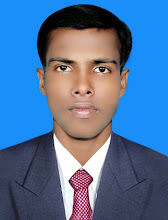There are six seasons in Bangladesh. They are summer, Rainy-season, autumn, Late-autumn, winter and spring. Two months make a season. Each season has its own features. The earth moves on its orbit. The season changes here due to the annual motion of the earth. The country is right by called the playground of the nature. Seasons are the vital role of nature. Here the nature changes alternatively after every two months. Such a change is called a season. The people also feel different in each season. They forgot the monotony of life and start their daily work newly.
Description of the seasons:
Summer:
The first season in Bengali calendar is the summer. Baishakh and Jaistha consists summer. During summer the sun shines hotly. The heat is terrible. Water goes dry, ponds, Tanks, canals, lakes, streams and small rivers go dry. There is scarcity of water everywhere. People can not work at ease. Summer is also the season of various fruits, various seasonal fruits ripe then. Sometimes kalvaishakhi sweeps over the country and causes harm and renders many people homeless.



The Rains:
After summer comes the rainy season. It is the second season. ‘Ashar’ and ‘Sravan’ are the months of rains. The sky is overcast with clouds and the sun cannot be seen for hours even for days. It rains heavily now and then. Roads become muddy. Sometimes Cats and dogs and sometimes in small drops. Ponds, canals, lakes and rivers are full to the brim. The earth and roads are wet and muddy. Rain is a great blessing for our country. At this time people move by boats. Sometimes it rains so heavily that it causes flood and brings untold miseries to people. Sometimes floods occur and people suffer. The main two crops of
Bangladesh, rice and jute, grow in this season.
The autumn:
After the rain comes the Autumn. Bhadra and Arshin are the months of this season. Rain is not so copious. The sky is clear and white clouds float in the sky. The sky looks deep blue and flowers bloom in this season. Days and nights are almost equal.
Late-autumn:
The autumn rolls into the late autumn. ‘Kartic’ and ‘Agrahayan’ are the months of the autumn. Dew-drops begin to fall. Paddy ripens and is cut down in this season. It is the season of dew and farmers look happy. They are busy in harvesting. They perform the Nabanna. It also hints the arrival of winter.
Winter:
The late autumn is following by the winter. ‘Poush’ and ‘Magh’ are the months of winter. Winter looks gloomy. It is very cold then and days are shorter and nights are longer. Trees become bare of leaves. Days are very short and the nights are very long. People shiver in cold. The poor suffer much from cold. They gather dry leaves and straw to warm themselves. Birds and other animals also suffer from cold. People warp themselves with quilt and blanket. When they go to bed at night various delicious vegetables grow in this season and people eat them. It is the season of fog.
Spring:
Spring is the best of all seasons. 'Falgoon' and 'Chaitra' make this season. It is called the king of seasons. The spring comes after winter. It is the season of Flowers. It is neither too cold nor too hot. The most pleasant and enjoyable part of the year is Spring. New leaves shoot out. Trees and plants look beautiful. The Earth smiles with fresh beauty. In this season the sky is not cloudy. So the sky is bright. And at night the moon arrive at full blossom. There is joy in every mind. Though the spring is the season of flowers. But the cuckoo is an attraction of this season. the sweet song of cuckoo moves our mind with joy. Not only cuckoo but also other birds like Doel, Bou kotha kao, songs sweetly in this season. The flower blooms and give us sweet scent all around. The gentle breeze blows. More over all the beauty of this season is enjoyable. All other seasons have demerits and disadvantages. But the spring season has no demerits. It has only good side. There is a joy in nature everywhere. Thus moves the cycle of six season. Each season has its own influence on the people of Bangladesh. We are lucky to have six seasons in our country.
The history of Bangladesh Pakistan came into veing comprising two wings west and East Pakistan .
East Pakistan our present Bangladesh, became a colony of west Pakistan and the rulers of west Pakistan ruled our country with an oppressed hand. Then in 1971 through a long battle of nine months we achieved our freedom. About thirty lakhs people sacrifice their lives in the battle. Today we remember them with respect. It is one of the most beautiful countries of the world, with its green fields and lots of trees and plants.
In Bangladesh Dhaka is the capital of our country. The state language of the country is Bangle. Only a few tribes of Bandarban, Khagrachari, Rahgamati speak in their tribal language. But there is wide practice of English, Arabic and Urdu. English is our second language.
The national dress for men is payjama and panjabi and for women, sari. But the educated people wear trousers and shirts and young women Salwar and Kamiz. Most people wear lungi and shirt. Bangladesh Bangladesh land of Bangladesh Chittagong Bangladesh Bangladesh Bangladesh Brahmaputra are big rivers. The beautiful cornfields of Bangladesh
There are six seasons in our country. They are Summer, Rainy season, Autumn, Late Autumn, Winter and Spring. Every year natural calamities like flood, cyclone, draught etc. visit this country. Its climate is hot and humid. Though Bangladesh
Subscribe to:
Comments (Atom)

